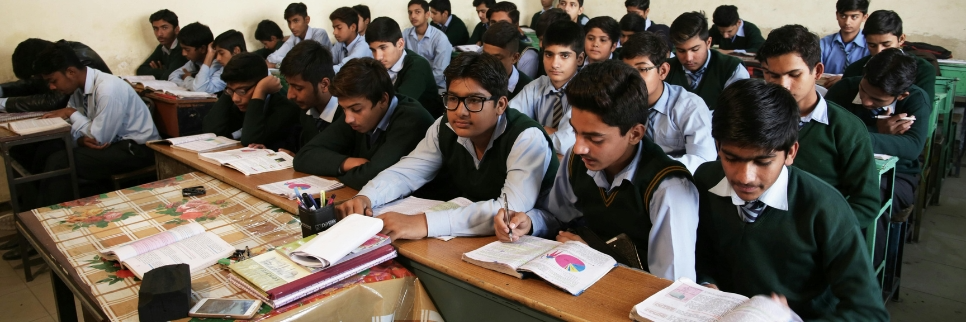Overview Of Some Of The Best Education Systems In The World.

- December 6, 2023
- 2044
Education is the key that opens the door to every great success. The world has come to know this secret very well. No nation can progress until it improves its education sector. Unfortunately, our country is far behind other countries in the world in the field of education. The education system in the country is very poor, and as a result of this deterioration of the educational structure, we are far behind the world in the field of science and research.
The class system of education still exists in Pakistan. Most of our public-school buildings here are either very dilapidated or do not even have desks and chairs for students to sit on. Many government schools are even deprived of teachers. Due to a lack of basic facilities and poor quality of education, students belonging to the poorer sections are left behind in the field of education. As a result of this difference in the educational standards of the rich and the poor, a student belonging to the poor class does not advance, and the system pushes him to child labor.
One-third of Pakistan's population lives below the poverty line. It is also a fact that in a country where it is difficult to get even two meals a day, how can parents bear the burden of the high fees of educational institutions to educate their children, due to which the students from the poor class do not complete their education.
Unlike Pakistan, the dedication to adopt a modern education system and keep pace with the world has brought the education systems of different countries to the top. Canada, the United Kingdom, Australia, the USA, and many other countries are considered the first choice for students to get a higher education, while South Korea is also developing rapidly in the field of education. The number of students and professionals going to China for higher education from Pakistan is also increasing day by day. In the Middle East, Dubai has also introduced drastic reforms in its education system. The education system that Cuba has introduced for its citizens is recognized by the world for how it has created the best education system for its people despite financial difficulties.
The education system in any country has certain metrics based on which the quality of education in that country is judged, such as "how does the education system in a country meet the needs of a good economy"? etc. To answer this question, here is a look at the education systems in some of the best countries in the world today.
Finland
Finland's education system is recognized worldwide. Teachers here are selected from among the top 10 percent of graduates in the country and are required to have a master's degree in education. Finland's approach to education can serve as a model for other nations looking to enhance teacher quality, advance equity and access, adopt inquiry-based learning, reduce standardized testing, and put student welfare first.
New Zealand
New Zealand is one of the countries with the best education systems in the world. The education department of this country is always at the forefront of innovation. In New Zealand's education system, students' families play an important role, and parents are also involved in the management of the educational institutions in which children attend. Although New Zealand has an officially approved curriculum, teachers have the discretion to teach it to students with necessary modifications if deemed necessary.
Australia
Australia is a highly educated country and has a high rate of tertiary education. 43 percent of people here have received training from an institution after leaving school, which is the highest rate after Canada, Japan, Korea, the United States, and the United Kingdom. Excellent results are produced by the system, such as great employment outcomes, low dropout rates, and high student achievement.
United States
In America, 43 percent of the population is educated at the university level. This is the fifth-highest rate among the developed countries in the world.
The education system in the United States is decentralized, with separate standards and laws for each state. The elementary, middle, and high school levels make up the three primary divisions of the system. Grades K–5 is usually covered in elementary school, grades 6–8 in middle school, and grades 9–12 in high school. All pupils are entitled to free public education, and there are numerous private educational options as well.
Norway
Norway has a fairly high tax rate, and the money it receives is invested in education. Norway spends about $14,000 a year per student on primary to university education, the third highest rate among developed countries.
Belgium
Higher education in Belgium has its full advantage, as the unemployment rate for university graduates is only 3%. The unemployment rate among those with other levels of education is also lower than the European average. Teaching is also an important sector in the country. The average salary of teachers in this country is 74 thousand dollars per month. In developed countries, it is an average of 52 thousand dollars.






